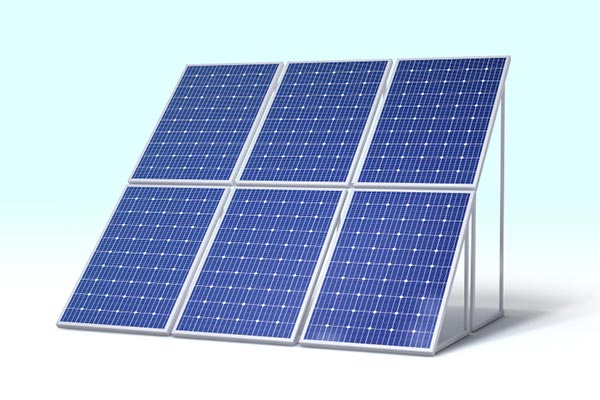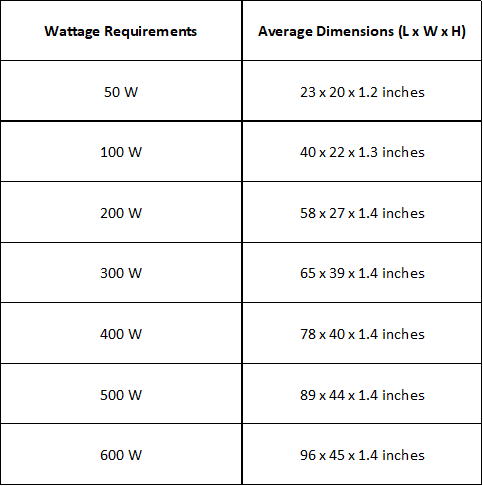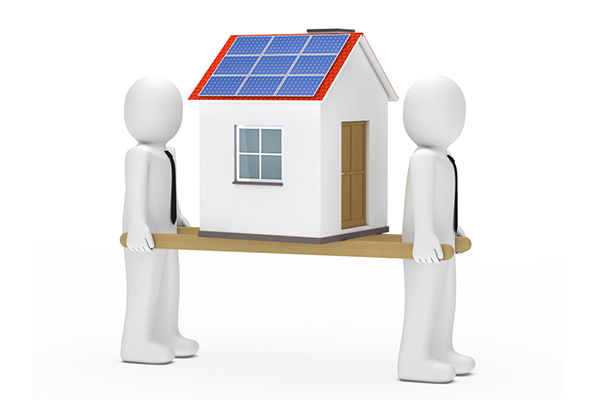Do Solar Panel Sizes Actually Matter? | Facts You Should Know
When it comes time to invest in solar for your home, so many questions come up. For many homeowners, switching to solar can feel a bit like entering the “wild, wild west.” Fortunately, it’s not all that complicated once you get into the details.
You’ve probably driven by other homes or businesses that have solar panels on their roofs or set up nearby, and more than likely, each building will have a different number of solar panels than the next. Some panels might be large, others might be smaller. The output of energy that you’ll need will impact how many solar panels you should install, but to determine the size of those solar panels, you’ll have to consider the size and shape of your roof.
You can read more about solar panel roof here.
During the sales process, you should work closely with your solar installer to determine what works best for you, but in short, solar panel sizes do matter. No matter what your needs are, you’ll be able to find the perfect fit, but first, let’s cover some of the basics when it comes to solar panel sizes.
Table of contents:
- What is the Standard Size of Solar Panels in the US?
- Factors that Impact Solar Panel Size
- Solar Panel Size Breakdown
- How Much do Solar Panels Weigh?
- What Size of Solar Panels do I Need?
- What Size Solar Panel Will Charge a 12v Battery?
- Solar Panel Size Does Matter
What is the Standard Size of Solar Panels in the US?
A standard solar panel in the US that is purposed for residential use will contain 60 solar cells and have an average length of 65 inches with an average width of 39 inches. The depth of these panels is usually around 1.5 – 2 inches. There might be some slight variations depending on the solar provider you are working with, but these measurements are a good rule of thumb when you’re doing preliminary planning.

Image by wirestock on Freepik
It's important to keep in mind that residential solar panels differ in size from commercial solar panels. The average solar panel in a commercial setting will have 72 solar cells, a length of 78 inches, and a width of 72 inches. They are a bit bigger because commercial businesses usually have more space for solar panels and require more energy from them than residential customers.
Factors that Impact Solar Panel Size
Though there is a standard size for residential solar panels in the US, we mentioned that there might be some variation between panel sizing. Differences in panel sizing can exist for a number of reasons, including the type of panel, the requirements for energy, and even the details of the customer’s roof.
Type of Panel
When talking about the type of panel, consider the material it is made from as well as its brand. Solar panels can be made out of monocrystalline, polycrystalline, and thin-film. Monocrystalline is the most efficient option, but it’s also the most expensive. The more efficient a solar panel is, the less surface area it requires to absorb and dispense energy. So, panels made of this material might be smaller than panels that are less efficient, such as the thin-film panels. If you feel like to know more about solar panel efficiency, click here.
Energy Requirements
Solar panel sizes will have a direct impact on how much energy your solar panels can offer. The larger a solar panel, the more wattage it can produce. In a later section, we’ll tell you just how to calculate how much energy you’ll need to replace your current energy source so that you can make an informed decision when it comes to deciding on the right solar panels for your home.
Roof Details
Larger homes require more energy and usually have more surface area on the roof. If you have plenty of surface area on your roof, this won’t be a major consideration when installing your panels. However, if you have a small home or a uniquely-shaped roof, your installation team will need to plan accordingly. With less surface area for panels, you’ll have to opt for the most efficient options to fulfill your energy needs.
Solar Panel Size Breakdown
Different solar panels will provide different amounts of energy, which is measured in wattage. Below is a quick glance at a panel’s wattage and its average size. Remember, the size of a panel can differ based on the factors above.
Wattage Requirements Average Dimensions (L x W x H)

You’ll notice that the 300 W panel matches up to the average residential sizing dimensions. These panels are the most common panels in residential settings, and unless you have specific requirements, there’s a high chance that you’ll have these very panels installed on your roof!
How Much do Solar Panels Weigh?
Solar panels have to be sturdy enough to withstand inclement weather conditions, last many years, and deliver energy to your household. The technology doesn’t yet exist to make them weightless, though they seem to get lighter and lighter as the years go by.

Image by d3images on Freepik
Currently, the average residential solar panel will weigh 2-4 pounds per square foot. These measurements include mounting equipment, so you won’t have to factor that in as an addition. The average 300 W residential solar panel weighs roughly 40 pounds, depending on what it is made of and how large it is.
The average roof in the US is more than ready to take on this weight. In the grand scheme of things, when it comes to your home, solar panels will not be too much weight for your roof to handle. Again, be sure to partner with your solar installation company to verify that your home can take on solar panels, but in most cases, the weight should not be an issue.
What Size of Solar Panels do I Need?
Unless you have a unique situation, your solar panel sizes will probably be the same as the average residential solar panels. However, you will need to figure out how many of those solar panels you need. To do this, look at your energy bill from the last few months. Find where it tells you “Kilowatt Hours Used” or something similar. Usually, this number accounts for a monthly billing cycle, but that could vary, so be sure to check.
The information on your bill will usually be in kilowatts, so you can simply multiply that by 1,000 to get the wattage requirements for your home. Since the standard-size solar panel for residential installations usually provides 300 watts, you can use that information to estimate the number of panels you’ll need.
The average 2,000 sq. ft. home in the US will need roughly 19-25 panels to fulfill its energy requirements. Your solar installation experts will help calculate exactly what you need, so you can get rid of any complicated calculations on your kitchen whiteboard. Or you can make a good use of Renogy Solar Calculator or their superb version of Super Solar Calculator.
What Size Solar Panel Will Charge a 12v Battery?
If you’re looking to charge a specific appliance or battery type, you can calculate that, too! There are many factors at play outside the battery itself such as the peak sun hours your solar panel gets and the weather conditions in which you’re charging, but an estimate should do the trick.
If you have a 12v battery with 100 amp hours, you will need between a 120 watts and 240 watts system to charge it efficiently. Of course, you can get a smaller solar system, but it will take longer to charge your battery.
Solar Panel Size Does Matter
When it comes to powering your home, your RV, or your favorite tools, solar power is a fantastic alternative to traditional energy sources. It’s cleaner, sustainable, and will likely cost you a lot less in the long run. However, it’s important to consider your solar needs before you make the leap. How much power do you need? How many hours of sunlight does your home get on average? These are just a couple of the questions you’ll work with your solar installation company to determine before figuring out the size and setup of your solar panels.
If you have a large home, you’ll need more power to fulfill your energy needs, and it might be recommended that you opt for commercial solar panels instead of standard residential panels. These commercial panels will be slightly larger and be able to have higher energy outputs than their smaller, residential counterparts.
Over the years, solar panels have gotten more efficient, which is great news because it means that you’ll need fewer solar panels or smaller solar panels than someone who installed them a decade or two ago. The calculations can feel complex, but when you find the right installation partner, they’ll do all the heavy lifting for you.
Try effective monocrystalline solar panels, high-capacity 12V lithium batteries, andportable solar generators such as Phoenix 1000 from Renogy right now.
Related articles:
Should I wire my panels in parallel or in series? - Renogy United States
3000w Inverter Charger vs 2000w Inverter Charger - Renogy United States
What Impact Do Colored Solar Panels Have on Performance? - Renogy United States
48 Volt Systems: The Future of Off-Grid Solar - Renogy United States








